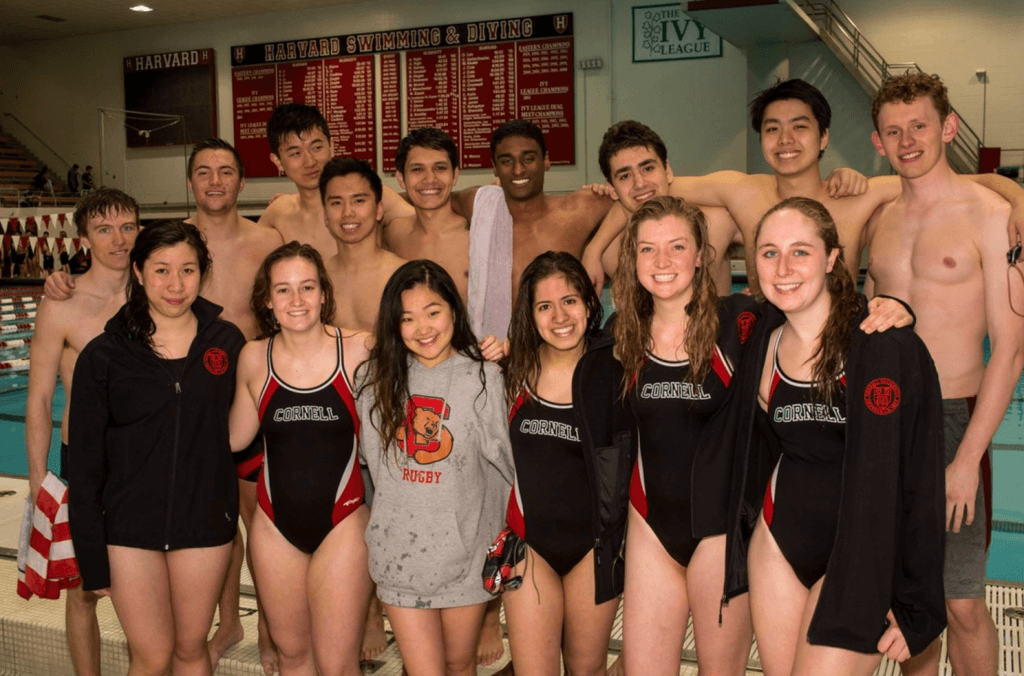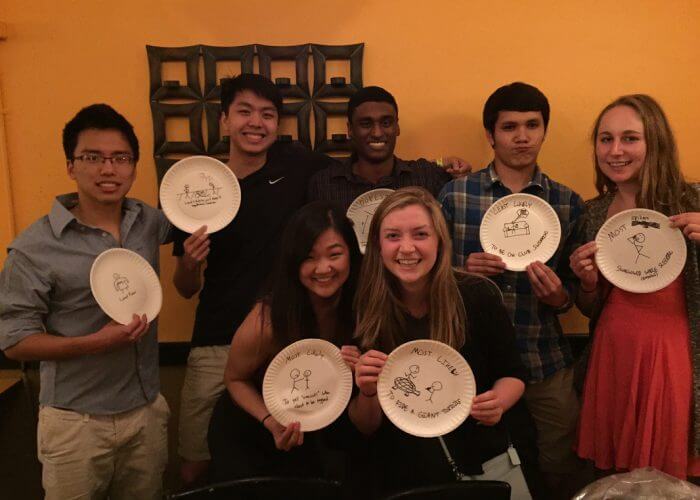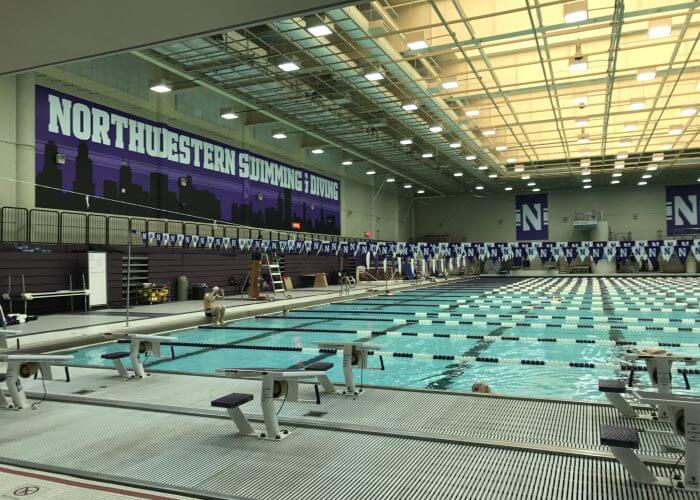What It’s Like To Be A Club Swimmer At A Division I School

By Ailish Dougherty, Swimming World College Intern.
It takes a special kind of person to refuse to give up on their passion, despite being unable to swim at a varsity level for the school they have chosen. College club swimmers show an outstanding dedication to and love for the sport of swimming.
“The fact that I was about to move to college and completely cut out a major aspect of my life was daunting, explained Kevin Chan, co-Vice President of the Northwestern University club swim team. He continued, “I love club swimming because it allowed me to hold on to the sport that had been an integral part of me.”
There are so many reasons to swim at the collegiate Division I level: the camaraderie and competitiveness of an elite team, the opportunity to go to NCAAs, the scholarships and benefits offered. Club swimming opens up a whole new realm of reasons to love the sport of swimming. As Arielle Anderer, a club swimmer at Cornell University, explained, “Swimming can be whatever I need it to be. Often, it’s more of a stress relief than anything.”
For many swimmers, the opportunity to swim club takes the pressure off, pressure that can often lead to anxiety, burnouts, and depression. Chan revealed, “Our club is composed of people who just love the sport, because they have the opportunity to walk away at any moment, but they choose not to. It’s so much less about the high pressure environment of getting faster times or making finals or winning events than it is about just having fun while you’re there.” Anderer even said that a few varsity swimmers have given up their spot on the team at Cornell to swim club.
Club swimming provides students with a built-in group of new friends who are able to, as Chan explained, “bond over our ‘glory’ days in the pool,” while also supporting each other in the transition out of competitive high school swimming. Adjusting to a new level of training and thus ability can be difficult, but the cutthroat competitiveness of varsity swimming is long gone. Often, “enjoying what you are doing can have amazing results. Our team just wants to kick it and have fun, which in turn can actually lead to some fast swimming,” explained Chan.

Photo Courtesy: Cornell Club Swimming
As club teams do not have coaches, leadership on Northwestern and Cornell’s club swim teams looks very different than leadership on a varsity Division I team. Anderer said that the team is “completely student run. We hold tryouts, write practices, contact other schools about coming to meets, do entries, book hotels, arrange travel, apply for university funds, and pay dues.”
Club swimming provides a unique opportunity for all members of the team to practice responsibility and leadership skills. “No one is ‘in charge.’ There is equal footing to make decisions, and everyone’s opinion is taken into consideration,” Chan said. “In practice, it’s nice that our VPs are just peers so there is no authority in the pool. We are all there to swim together and give each other pointers.”
Meets are something to look forward to for club swimmers, as there are only about four to five a semester. Other than the pressure swimmers may put on themselves, “there is no real pressure to perform,” said Anderer. Chan concurred, explaining that “everyone is kind of resigned to the fact that they won’t be as fast as they used to be, so we all have a fun time with whatever our times end up being.”
As Anderer recounted, there are even opportunities to socialize with other teams, “A lot of the time, the hosting team will throw a get together the night after the meet for all the teams who are staying over. It’s cool to get to know members of the other school’s team in a casual setting as well.”
But what does a normal practice look like for a club swim team? Club teams are often relegated to the unwanted pool hours for their practices (both Northwestern and Cornell practice around 8:30pm to 11pm), so swimmers must be extremely dedicated to the sport to continue their efforts in the early morning or late at night.

Photo Courtesy: Ailish Dougherty
Chan, being one of the Vice Presidents, has the opportunity to write practices for his peers. Mostly, he tries to draw from sets he remembers doing “back in the day.” Usually, they are upwards of 3,000 yards (plus warm-up and cool-down), and he writes modified sets and time intervals to accommodate the range of swimmers on the team. He avoids distance sets, because “no one on the team would EVER do a long distance event, so why train for it?”. No one is forced to be at practice, or to do something they don’t feel comfortable doing, so there is always a positive and supportive atmosphere.
Collegiate club swimming fosters a real sense of independence and personal responsibility, while also allowing swimmers to be social, have fun, and continue doing what they love without any added stress. Swimming is still very close to both Anderer and Chan’s hearts, but participating at the club level allows both the opportunity to get involved in other activities and meet new people, as they move on to the next chapter in their lives.
All commentaries are the opinion of the author and do not necessarily reflect the views of Swimming World Magazine nor its staff.




Matt Daugherty
Miranda Emaus
Yup!
Especially the part about distance sets.
Wow Arielle Anderer!
wow!
?
Kaitlyn Miller
Club Water Polo is also great fun.
Agreed! I’m on both and they’ve both changed my life
This article is exactly on point with all of the great qualities of club swimming. Love it! Couldn’t agree anymore.